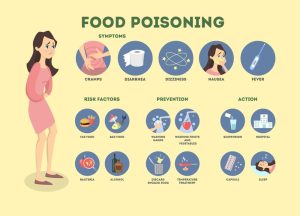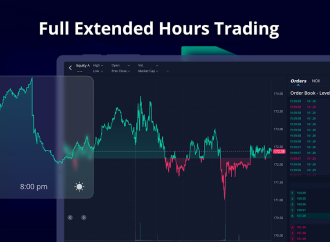Understanding Foodborne Illnesses Food is meant to nourish and sustain us, but unfortunately, it can sometimes lead to illness and discomfort. Foodborne illnesses, often referred to as food poisoning, occur when contaminated food is consumed. These illnesses can range from mild gastrointestinal discomfort to severe infections that require medical attention. Understanding the causes and preventative
Understanding Foodborne Illnesses
Food is meant to nourish and sustain us, but unfortunately, it can sometimes lead to illness and discomfort. Foodborne illnesses, often referred to as food poisoning, occur when contaminated food is consumed. These illnesses can range from mild gastrointestinal discomfort to severe infections that require medical attention. Understanding the causes and preventative measures of foodborne illnesses is crucial for maintaining public health and safety.
Common Causes of Food Contamination
- Bacterial Contamination: Bacteria such as Salmonella, E. coli, and Listeria are common culprits behind foodborne illnesses. These microorganisms can contaminate food at various stages, including during production, processing, storage, and preparation.
- Viral Contamination: Viruses like norovirus and hepatitis A can also cause foodborne illnesses. Contamination often occurs through improper handling of food or contact with infected individuals.
- Parasitic Contamination: Parasites like Cryptosporidium and Giardia can contaminate water sources and, consequently, food products. Consumption of contaminated water or undercooked food can lead to parasitic infections.
- Toxins: Toxins produced by certain bacteria, such as Staphylococcus aureus and Clostridium botulinum, can contaminate food and cause illness. Improper food handling and storage conditions can promote toxin formation.

Image by: yendex.com
Preventative Measures
Preventing foodborne illnesses requires a combination of proper food handling, hygiene practices, and regulatory measures. Here are some essential actions individuals and food establishments can take to minimize the risk of food-related sickness:
1. Safe Food Handling Practices
a. Proper Storage:
- Store perishable foods such as meat, poultry, and dairy products in the refrigerator or freezer promptly after purchase.
- Ensure refrigerators are set to the appropriate temperature (below 40°F or 4°C) to slow bacterial growth.
b. Thorough Cooking:
- Cook foods, especially meat, poultry, seafood, and eggs, to their recommended internal temperatures to kill harmful bacteria.
- Use a food thermometer to verify the internal temperature of cooked foods.
c. Avoid Cross-Contamination:
- Keep raw meats separate from ready-to-eat foods to prevent cross-contamination.
- Wash hands, utensils, and surfaces thoroughly after handling raw meat, poultry, or seafood. Explore more About (Eye Surgery)
2. Personal Hygiene Practices
a. Handwashing:
- Wash hands with soap and water for at least 20 seconds before and after handling food, using the restroom, or changing diapers.
- Use hand sanitizer with at least 60% alcohol if soap and water are not available.
b. Illness Awareness:
- Food handlers should stay home when experiencing symptoms of illness such as vomiting, diarrhea, or fever.
- Educate food handlers about the importance of reporting illnesses to prevent the spread of infection.

Image by: yendex.com
3. Regulatory Compliance
a. Food Safety Standards:
- Adhere to local food safety regulations and guidelines set forth by health authorities.
- Implement Hazard Analysis and Critical Control Points (HACCP) principles to identify and control food safety hazards.
b. Inspection and Monitoring:
- Regularly inspect food establishments for compliance with hygiene and sanitation standards.
- Monitor food storage, handling, and preparation processes to ensure adherence to safety protocols.
4. Consumer Education
a. Public Awareness Campaigns:
- Launch educational campaigns to inform the public about safe food handling practices and the risks of foodborne illnesses.
- Provide resources such as brochures, posters, and online materials to promote awareness.
b. Food Safety Training:
- Offer training programs for food handlers and consumers on topics such as proper handwashing, temperature control, and cross-contamination prevention.
- Collaborate with community organizations and healthcare providers to reach diverse populations.
Common Causes of Food Contamination
| Type of Contamination | Examples | Mode of Transmission |
|---|---|---|
| Bacterial Contamination | Salmonella, E. coli, Listeria | Production, processing, storage, preparation |
| Viral Contamination | Norovirus, hepatitis A | Improper handling, contact with infected individuals |
| Parasitic Contamination | Cryptosporidium, Giardia | Contaminated water, undercooked food |
| Toxins | Staphylococcus aureus, Clostridium botulinum | Improper handling, storage conditions |
Conclusion
Foodborne illnesses pose significant risks to public health and can have serious consequences if not properly addressed. By understanding the causes of food contamination and implementing preventative measures, individuals and food establishments can mitigate the risk of food-related sickness. Safe food handling practices, personal hygiene measures, regulatory compliance, and consumer education are essential components of a comprehensive approach to food safety. Together, these actions contribute to healthier communities and reduce the incidence of foodborne illnesses.




















